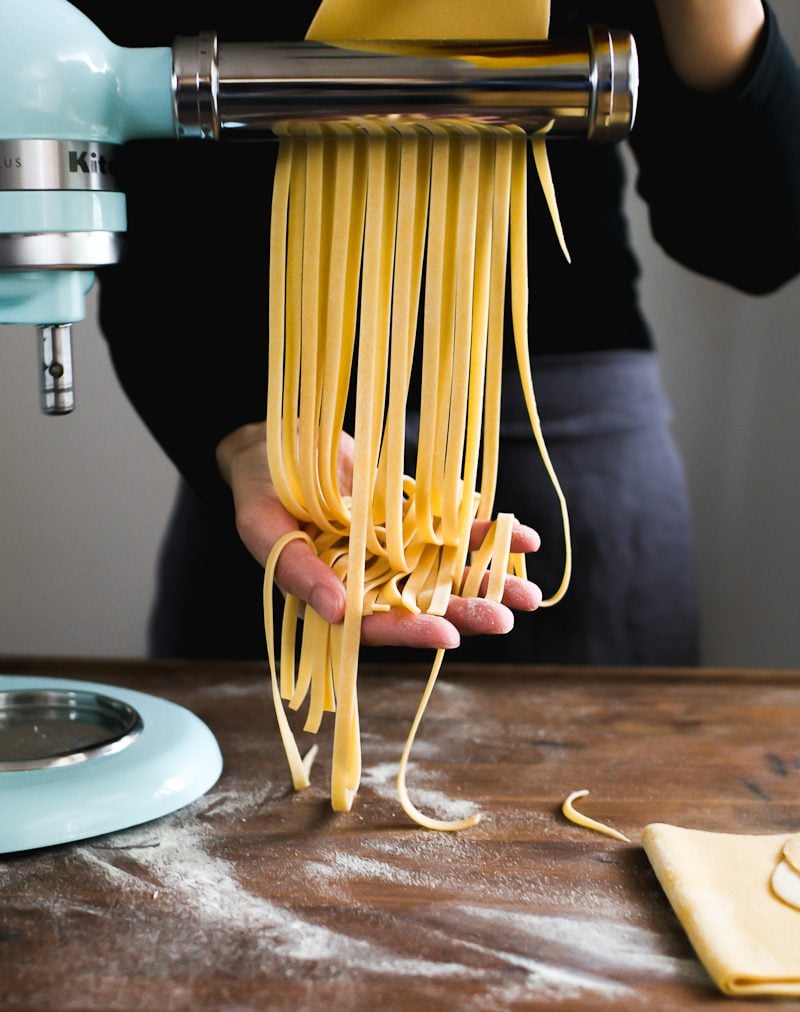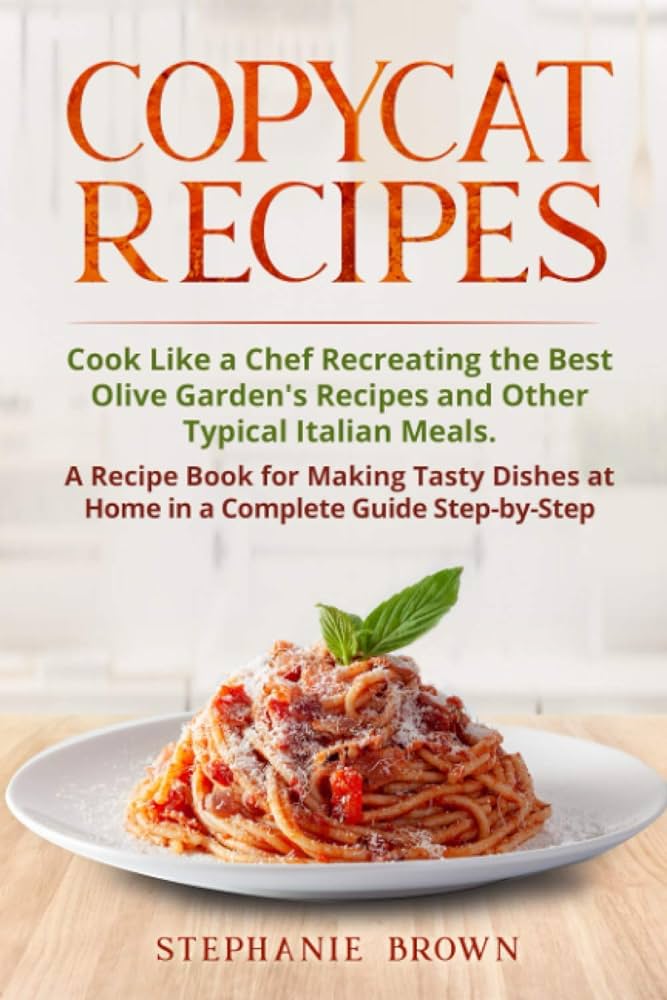Cook Like an Italian Recipes: Step by Step Guide
Learn to cook authentic Italian recipes with a step-by-step guide for delicious homemade meals. From pasta to pizza, master the art of Italian cuisine and impress your friends and family with your culinary skills.
Embrace the rich flavors and traditional techniques of Italian cooking as you explore the world of Mediterranean gastronomy. Whether you’re a beginner or an experienced chef, this comprehensive guide will help you bring the taste of Italy into your kitchen.
Let’s dive into the vibrant world of Italian cuisine and unlock the secrets to cooking like an Italian.
Essential Ingredients In Italian Cooking
Italian cuisine is renowned worldwide for its simple yet delicious dishes. The key to authentic Italian cooking lies in the use of essential ingredients such as olive oil, garlic, basil, tomatoes, and Parmesan cheese. With this step-by-step guide, you can cook like an Italian and indulge in the flavors of Italy from the comfort of your own home.
Italian cuisine is all about simplicity, quality ingredients, and bold flavors. Whether it’s a classic pasta dish or a hearty meat-based meal, the key to a delicious Italian recipe lies in the use of essential ingredients. Here are the three essential ingredients in Italian cooking that you need to know:Quality Olive Oil
When it comes to Italian cooking, olive oil is a fundamental ingredient. Whether you’re sautéing vegetables, grilling meat, or dressing a salad, you’ll need a good quality olive oil. Extra virgin olive oil is the best type of olive oil for cooking as it’s made from the first cold-pressing of the olives, resulting in a high-quality oil with a fruity flavor and low acidity. It’s important to note that not all olive oils are created equal, so make sure to choose a high-quality extra virgin olive oil for the best results.Fresh Herbs And Spices
Fresh herbs and spices are essential ingredients in Italian cuisine as they add depth and flavor to dishes. Basil, oregano, thyme, rosemary, and parsley are some of the most commonly used herbs in Italian cooking. These herbs are often used in pasta sauces, meat dishes, and salads. Spices like garlic, red pepper flakes, and black pepper are also commonly used in Italian cuisine. Using fresh herbs and spices will enhance the flavors of your dishes and take your cooking to the next level.Authentic Cheeses
Cheese is a staple ingredient in Italian cuisine, and authentic Italian cheeses can take your dishes to the next level. Parmigiano-Reggiano, mozzarella, and pecorino romano are some of the most commonly used cheeses in Italian cooking. Parmigiano-Reggiano is a hard, aged cheese that’s perfect for grating over pasta dishes, while mozzarella is a soft cheese that’s often used in pizza and salads. Pecorino romano is a sharp, salty cheese that’s perfect for adding flavor to pasta dishes. Using authentic Italian cheeses will add a depth of flavor to your dishes that you just can’t get with processed cheeses. In conclusion, Italian cuisine is all about using quality ingredients to create bold and flavorful dishes. By using quality olive oil, fresh herbs and spices, and authentic cheeses, you can elevate your Italian cooking to new heights. So next time you’re cooking an Italian meal, make sure to incorporate these essential ingredients for a truly delicious dish!Mastering Italian Cooking Techniques
Perfecting Pasta Making
Crafting al dente pasta requires precise timing and water-to-pasta ratio.
Sauce Simmering Secrets
Enhance flavors by slow-cooking sauces to meld ingredients harmoniously.
Art Of Risotto Cooking
Master the creamy texture by adding warm broth gradually while stirring constantly.
Classic Italian Recipes
Discover authentic Classic Italian Recipes with our comprehensive step-by-step guide to Cook Like an Italian. From hearty pasta dishes to delectable desserts, master the art of Italian cuisine effortlessly. Unleash your inner chef and elevate your cooking skills to impress family and friends.
Classic Italian Recipes Spaghetti Carbonara Spaghetti Carbonara is a classic Italian pasta dish made with eggs, cheese, pancetta, and black pepper. It is a simple yet indulgent recipe that captures the essence of Italian comfort food. The rich and creamy sauce coats the perfectly al dente spaghetti, creating a dish that is beloved worldwide. Follow these simple steps to recreate this iconic dish in your own kitchen. Margherita Pizza The Margherita pizza is a timeless Italian creation that showcases the beauty of simplicity. With a thin crust, sweet tomato sauce, creamy mozzarella, and fresh basil, this pizza is a celebration of classic Italian flavors. The combination of these high-quality ingredients results in a pizza that is both rustic and refined. Follow these step-by-step instructions to craft an authentic Margherita pizza that will transport you to the streets of Naples. Tiramisu Dessert Tiramisu is a beloved Italian dessert that layers delicate ladyfinger biscuits with a luscious mixture of mascarpone cheese, espresso, and cocoa powder. This elegant and indulgent treat is a staple of Italian cuisine, known for its creamy texture and rich coffee flavor. By following these straightforward steps, you can create a decadent Tiramisu that is sure to impress your guests. In the next section, we’ll dive into the step-by-step guides for preparing these classic Italian recipes, ensuring that you can bring the authentic flavors of Italy into your own kitchen.
Credit: www.theclevercarrot.com
Regional Italian Specialties
When it comes to Italian cuisine, each region has its own unique and delightful specialties that reflect the local traditions and ingredients. From the rich and hearty dishes of Northern Italy to the bold and flavorful creations of Sicily, the regional Italian specialties offer a diverse culinary experience.
Northern Italy Delights
The northern region of Italy is known for its rich and creamy dishes, often featuring butter, cheese, and hearty meats. Some iconic dishes include creamy risottos, polenta, and hearty stews like osso buco. The cuisine of Northern Italy is influenced by its proximity to the Alps and the abundance of freshwater fish and game.
Sicilian Flavors
Sicilian cuisine is a vibrant fusion of Mediterranean flavors, reflecting the island’s diverse cultural influences. From the famous caponata and arancini to the refreshing seafood dishes and citrus-infused desserts, Sicilian cuisine is a celebration of fresh, bold flavors and local ingredients.
Tuscan Treasures
Tuscany is renowned for its simple yet flavorful dishes that highlight the region’s abundant produce and high-quality meats. Tuscan cuisine features dishes like ribollita, a hearty bean and vegetable soup, and bistecca alla fiorentina, a succulent grilled T-bone steak. The use of fragrant herbs, olive oil, and hearty breads is characteristic of Tuscan cooking.
Healthy Italian Cooking
Healthy Italian cooking is not just about taste and flavor, but also about nourishment and well-being. It’s about finding the perfect balance between delicious, satisfying meals and nutritious, wholesome ingredients. In this guide, we’ll explore the key principles of healthy Italian cooking, focusing on how to balance flavors and nutrition, embrace lighter alternatives, and make the most of fresh and seasonal ingredients.
Balancing Flavors And Nutrition
Italian cuisine is renowned for its robust flavors, but that doesn’t mean sacrificing nutritional value. By using herbs and spices to enhance taste, Italian dishes achieve a perfect balance of flavors while minimizing the need for excessive salt and fat. Olive oil is a staple of Italian cooking, providing healthy fats and adding richness to dishes without compromising on nutrition.
Lighter Alternatives
While traditional Italian cooking may feature rich sauces and heavy cheeses, there are plenty of lighter alternatives to explore. Opt for grilled or roasted dishes instead of fried, and use lean cuts of meat or plant-based proteins for a healthier twist. Embrace the Mediterranean diet by incorporating plenty of vegetables, whole grains, and legumes for a satisfying, yet light, approach to Italian cuisine.
Fresh And Seasonal Ingredients
Italian cooking celebrates the beauty of fresh, seasonal ingredients. From vibrant tomatoes and basil in the summer to hearty root vegetables and wild mushrooms in the fall, the key to healthy Italian cooking lies in embracing what nature has to offer. By prioritizing locally sourced, seasonal produce, you can ensure that your Italian creations are not only delicious but also packed with essential nutrients and flavors.
Tips For Authentic Italian Dining Experience
When it comes to creating an authentic Italian dining experience, attention to detail is key. From setting the table Italian style to pairing the perfect wine with your meal, there are several tips to ensure you and your guests enjoy a truly immersive experience. And of course, no Italian meal is complete without observing dolce (dessert) etiquette. Let’s dive into the essential tips for an authentic Italian dining experience.
Setting The Table Italian Style
Italian dining is all about creating a warm and inviting atmosphere, and the table setting plays a crucial role in this. Consider using a classic white tablecloth adorned with fresh flowers or a simple centerpiece. Opt for authentic Italian ceramic dinnerware and add a touch of elegance with cloth napkins. Embrace the Italian tradition of using minimal, high-quality tableware to elevate the dining experience.
Pairing Wine With Meals
Pairing the right wine with your Italian meal can elevate the flavors and overall experience. For red sauce-based dishes, opt for a medium-bodied red wine like Chianti. Seafood and lighter dishes pair well with a crisp white wine such as Pinot Grigio. When in doubt, a knowledgeable sommelier or a quick online search can help you choose the perfect wine to complement your meal.
Dolce (dessert) Etiquette
After indulging in a delicious Italian meal, it’s essential to observe dolce etiquette. When ordering dessert, take your time and savor the experience. Tiramisu, panna cotta, or a classic cannoli are popular choices. If dining with others, it’s customary to share dessert as a way to extend the conviviality of the meal. Enjoying a sweet ending to your meal is a delightful way to conclude your authentic Italian dining experience.
Bringing Italy To Your Kitchen
Step into the heart of Italy by preparing authentic dishes in your own kitchen. With these Cook Like an Italian Recipes, you can bring the flavors and traditions of Italy to your table.
Creating The Ambiance
Set the mood with Italian-inspired decor and aromatic candles to create a warm and inviting atmosphere.
Music To Cook By
Play classic Italian tunes in the background to transport yourself to the bustling streets of Rome or the serene countryside of Tuscany.
Inviting Others To Enjoy
Share the joy of cooking with friends and family by hosting a cozy Italian-themed dinner party filled with laughter and delicious food.

Credit: www.tiktok.com

Credit: www.tiktok.com
Conclusion
Mastering Italian recipes is now within reach with this step-by-step guide. Explore the flavors of Italy from your kitchen and impress your guests. Elevate your cooking skills and create authentic dishes that transport you to Italy. Get ready to cook like an Italian and savor the delicious results.
Start cooking today!





